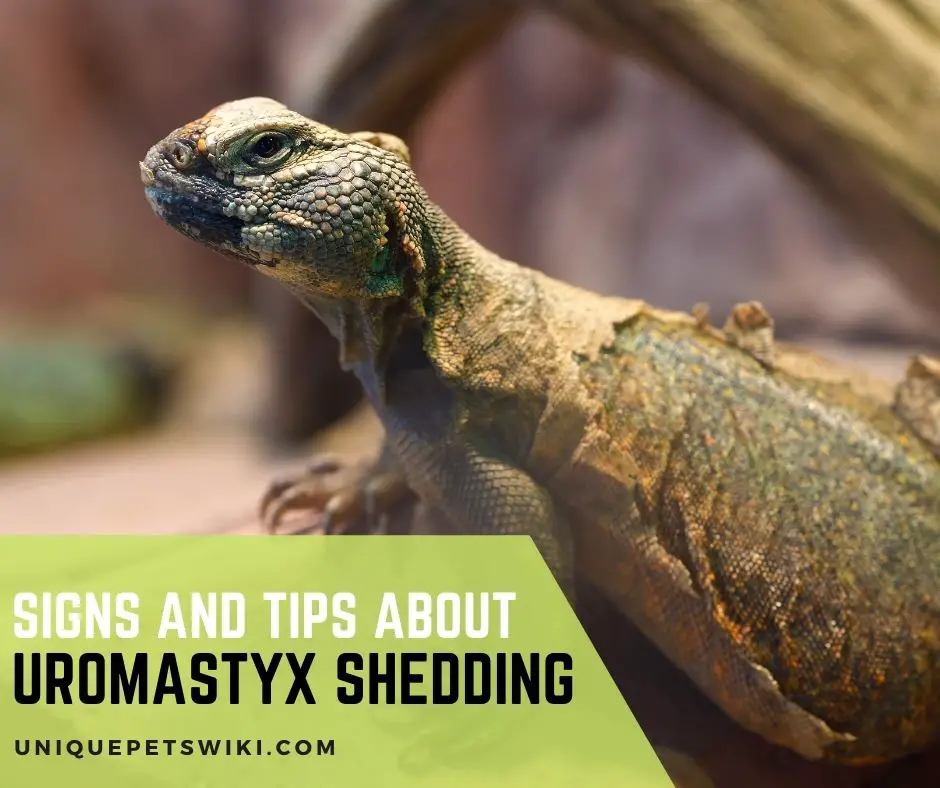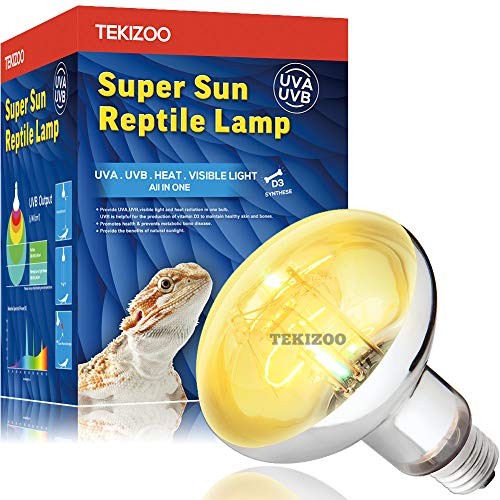Shedding is the natural process of removing old skin and replacing it with a new one. It is primarily due to growth, and young uromastyx shed more frequently as compared to those with older age.
It is natural for pet owners to wonder and worry about the process and how to attend to the needs of uromastyx.
This article will teach you everything you need to know about uromastyx shedding, including how to recognize signs of shedding and how to assist your uromastyx in the process.
This article has been reviewed by Dr. Gospel. Read more about our knowledge control process here.
Contents
Uromastyx Shedding: Everything You Need to Know
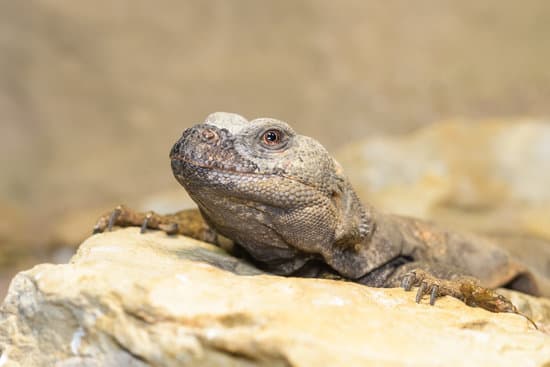
Uromastyx lose their skin as they grow and at regular intervals during their lives. As the skin begins to shed, it seems slightly dull as the old and new skin begin to separate.
It can take them a week to fully shed in small pieces. You will also notice signs such as more hiding, loss of appetite, and aggression towards handling among a few things when they are shedding.
Signs of Uromastyx Shedding
When the time comes for the shedding process to take place, you will notice the following signs in your uromastyx:
- Skin turning drab
- sleeps most of the time
- Aggressiveness towards being handled
- Refuse to consume food
- Make frequent contact with or rub onto items.
- Shed in fragments
You must expect your uromastyx to take up to a week to fully shed. Uromastyx sheds in tiny fragments. The skin becomes dull at first and eventually detaches from the new skin.
What Happens During Uromastyx Shedding?
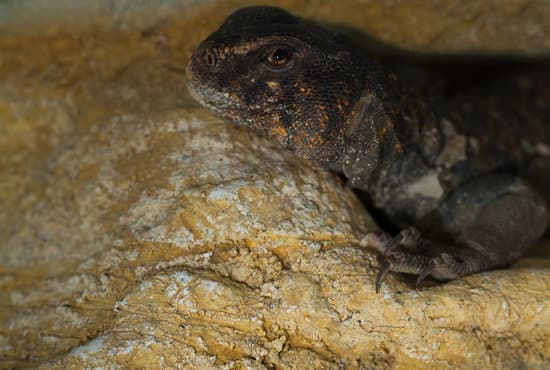
When your pet uromastyx is about to shed, they rub themselves onto other objects. Shedding can be a distressing and itchy experience for your uromastyx.
To help remove the skin, your uromastyx rub their heads and bodies against rocks and other rough surfaces. This is a behavior you should expect, it is also an indicator of the shedding process.
Rub your uromastyx’s head, tail, and toes with your fingers to assist it in shedding. After the shedding is finished, make sure there are no trapped pieces of skin.
Some uromastyx will eat their skin so you will not be able to notice it inside the tank.
To help you further, this article contains a comprehensive and elaborate guide to handling a uromastyx.
How Long Does a Uromastyx Shed?

Uromastyx shed slowly. It can take up to a week or longer for your uromastyx to shed once you see the dull skin.
The skin removal and replacement process will not last a month but expect that they will shed into small pieces.
Possible Risks When Uromastyx Shedding
Pulling the skin that is still tight and not ready to come off will result in scarring and infection. Only when the skin is peeling may you assist in removing it by hand.
However, constantly assist your uromastyx in shedding on the head, particularly on the eyelids, toes, and tail. Because the tail’s spikes can hold the old skin, you may need to manually remove it.
Always check around the toes and tail tip, because any trapped skin might cut off blood circulation and result in necrosis (cell death) of the toes or tail tip.
How to Distinguish between Shed and Sickness
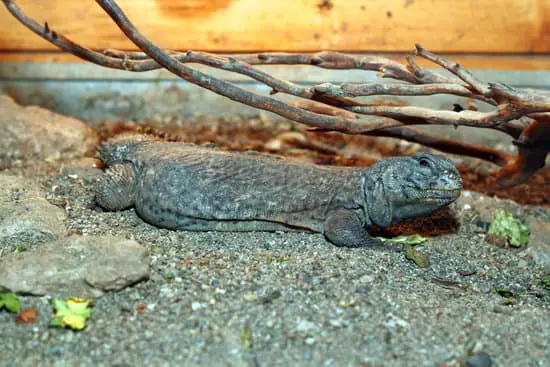
The aforementioned signs will be noticeable for your pet uromastyx. It will become irritated when it sheds skin.
You can assist them with the shedding process by putting some rough rocks and branches to rub against in their enclosure.
The following are signs of sickness in your uromastyx:
- Looking twisted or malformed.
- Seizures are occurring.
- It is dragging its legs behind it.
- Parasites from the outside.
- For a long time, patches of lost skin clung to them.
- Nasal discharge is a common occurrence.
- Either the eyes or the mouth is oozing.
- Breathing difficulties or wheezing
- Bubbly mouth discharge.
- Changes in eating habits, such as an increase, decrease, or complete cessation.
- There is no energy.
- Gasping.
- In their stools, they have orange spheres.
- Changes in stool appearance increased or decreased waste production.
- Scratching their enclosures regularly.
- Swelling or lumps.
- Predator bites
- Paralyzed to a degree.
- The neck and head are always drawn up.
- It had been flipped onto its back and was unable to bring itself back to its front.
- Regurgitation.
- Soaking in a lot of water.
- Blisters, scabs, bruises, inflammation, or redness are all symptoms of a bacterial infection.
When you suspect that your pet could be sick, consult a veterinarian right away.
What Happens If Uromastyx Not Shedding
If you noticed that your pet uromastyx has not shed in a long time, this is normal. Adult uromastyx beyond the age of three or four years can only shed once per few years.
Uromastyx that are younger may not shed for months.
While this is not a medical emergency, you can get your uromastyx assessed by a vet if there is no evident explanation for why it is unable to shed properly.
Meanwhile, look for any symptoms of external parasites such as mites, as well as any scars or skin sores that could explain why it has not been shed.
3 Tips to Care Uromastyx Shedding
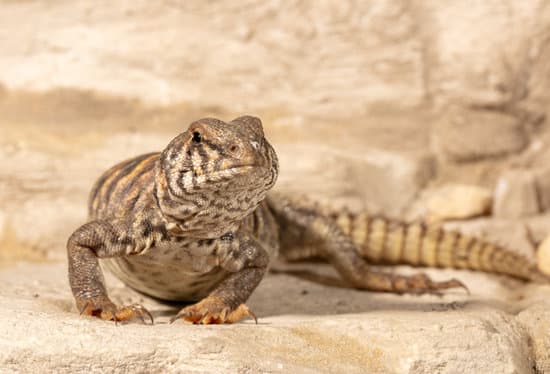
Certain aspects of Uromastyx care are contentious, such as UVB lighting options, substrate selection, and whether to keep a few bugs or none at all.
You should be able to determine the necessary tips so that you can make informed decisions about how to care for your pet when it comes to shedding.
Many health problems can be traced back to poor husbandry, so ensure that your pet uromastyx receives proper care and nutrition.
Ensure and Maintain Low Humidity Levels in the Tank
While a uromastyx requires low humidity levels of roughly 20-30%, you can provide it with a moist hide when it is shedding.
You can do this by putting some moist moss within the hide, which will assist the skin to stay moist and shed quickly. Do not spray or soak your uromastyx or the tank.
Extreme humidity levels can put your pet in danger. While your pet enjoys the heat, the temperature gradient of their enclosure needs to be maintained from 100 up to 85 degrees Fahrenheit.
Your pet must be able to roam around their enclosure to regulate their body temperature.
TEKIZOO UVA UVB Sun Lamp 160W High Intensity Self-Ballasted Heat Basking Lamp/Light/Bulb for Reptile and Amphibian
- ALL IN ONE - By providing UVA UVB heat and visible light from one bulb,the Tekizoo sun lamp could provide many of the known benefits of natural sunlight to captive reptiles.
- PERFECTLY SUITABLE FOR MANY KINDS OF AMPHIBIANS AND REPTILES - Our UVA UVB reptile super sun basking lamp is suitable for reptiles and amphibians such as :bearded dragons, tortoises,turtles,anole,day gecko,chameleon,uromastyx,iguanas, lizards, chameleons and more.
- COMPATIBLE WITH ALL ENCLOSURES - Our Super Sun UVA UVB bulb is compatible with a variety of enclosures, including tanks, vivariums,terrariums, vision cages, and more. This lamp will make sure the effective supply of the vital UVA and UVB light as the reptiles would have in nature.Please check sizing pictures to ensure the lamp is not too large for your fixture.
- PREMIUM QUALITY LAMP - Each of our reptile bulb is strictly tested before packaging in order to ensure their best working condition.
- SAFETY USAGE DIRECTION - Suggest use a good quality ceramic socket.This lamp is for reptiles/amphibians keeping only.Do not be used with a dimmer/thermostat/rheostat.Do not splash water on the lamp.Keep a proper distance from your reptiles when using.
Last update on 2022-12-29 / Affiliate links / Images from Amazon Product Advertising API
Ensure There Is a Soaking Tub in the Tank
If your uromastyx is not shedding all of his or her skin, soak him or her in warm water once a day for five to ten minutes. You may keep a soaking tub inside the enclosure to help in the shedding process.
If it is soaking, make sure that it is supervised and that its head can be held out of the water.
However, make sure to thoroughly dry it to avoid tail rot and infection. Soak only while the problem persists, as soaking uromastyx can cause complications. After that, place it in the tank to bask.
Also read: Uromastyx Tail Rot: 5 Causes And Best Tips How To Prevent
Don’t Pull The Skin to Help Uromastyx Shedding
Do not pull on the skin that is still tightly attached to the body. You will know that it is not yet ready to come off when it requires force to remove.
Forcing the removal of skin will result in scarring and infection.
Infections can form beneath the retained or unshed skin. These infections lead to red, irritated areas that may drain pus. Only when the skin is flaking can you assist in removing it by hand.
Help Uromastyx Stuck Shed by Some Ways
You could also use a small plastic tub filled with sphagnum moss that has been sprayed with water. Moss should be damp, but not dripping wet.
Make a hole in the tub lid for your uromastyx to easily enter and exit. However, do not leave your uromastyx in there for too long. Position it in the center of the enclosure to keep it moist but not cold.
If the previous owner or seller did not properly care for your uromastyx, there may be a few layers of a stuck shed on the body.
Another way to help your pet shed skin is by rubbing wet cotton balls on its dull and thick skin layer. This way can also moisten and soften your pet’s skin.
If the retained skin has gotten severely stuck, soak the affected area in warm water and gently rub it with a toothbrush.
It is recommended to soak your pet only once up to twice a day. Morning is a better time so your pet can spend the rest of his day basking to dry out.
Check our article to tell you the five things to do to get a stuck uromastyx out of a shed and help in the shedding process.
Fluker’s Reptile Bowl for Food/Water
- Designed For Food or Water
- Easy to clean and disinfect
- Colors are all natural tones, but can vary
- 5.25"x6.5"x 1.25" deep
Last update on 2022-12-29 / Affiliate links / Images from Amazon Product Advertising API
How to Treat Tissue Damaged by Retained Sheds
Small wounds in uromastyx, such as superficial cuts, scrapes, or tail nips, often heal on their own. Uromastyx’ wounds heal slowly because they have a slow metabolism and a variable body temperature.
Nothing to worry about because topical disinfectants and balms can help in healing your pet’s wound faster.
However for major injuries such as deep cuts and broken bones, it is recommended that your pet undergo a proper evaluation by a vet. Take your pet to a vet if oral antibiotics are required.
Topical treatment has two advantages: it disinfects the wound and covers it to keep dirt, irritants, and germs out while keeping it moist for faster healing.
The best advice for minor wounds in humans is to avoid irritating them. Be careful in selecting a product that has not been used or studied by veterinarians.
You should also have your vet demonstrate methods for loosening the retained skin. This would also allow the vet to examine the lizard to determine the cause of the dysecdysis or retained skin.
In Conclusion
Normal shedding is a crucial part of the growth in uromastyx. It simply relies on a variety of circumstances, including the uromastyx’s nutritional level, environmental conditions, and general health.
Thus, being able to properly care for your pet is critical. You must immediately set an appointment with a vet to accurately assess a problem when you suspect it.
Check out: Ultimate Uromastyx Care Guide for Beginners
